First marker seen was the African-American monument:
African American Monument
We got on the slave ships together, we lay back to belly in the holds of the
slave ships in each others excrement and urine together. Sometimes died
together and our lifeless bodies thrown overboard together. Today we are
standing up together with faith and even some joy.
-Maya Angelou
Next to it was the Savannah Riverfront marker:
Savannah Waterfront
Close by, This is Yamacraw Bluff Marker:
This is Yamacraw Bluff
Erected 1933 by The Georgia Daughters of the American Revolution and Three Savannah Chapters.
Next, another marker to Oglethorpe:
Landing of Oglethorpe and the Colonists
Savannah was for more than 100 years built according to Oglethorpe's unique city plan. Bull Street, the principal street of the city, is named in honor of colonel William Bull of Charleston, S.C., who assisted Oglethorpe in laying out the city.
The colonists sailed in the ship Anne from Gravesend, England, November 17, 1732; landed at Charles Town, S.C., January 13, 1733; proceeded later to Beaufort, S.C., and thence, in small boats, through the inland waterway to Yamacraw Bluff. The town site had already been selected by Oglethorpe in friendly negotiation with Tomo-chi-chi, Mico of the Yamacraws, and with Mary Musgrove, the English- speaking, half-breed Indian princess who later, as niece of Emperor Brim of the Creek Nation, claimed sovereignty of southeastern Georgia.
Then, one for the "Savannah"
The Savannah
commemorates the centenary of
The "Savannah"
The first steamship to cross the ocean
The idea of this enterprise originated with
William Scarborough
and his associates
citizens of Savannah
and was financed by them
The Savannah steamed out of this port
on this great adventure for Liverpool
on May 22, 1819 and arrived June 20, 1819
Francis Fickett, Builder, Moses Rogers, Captain
The “John Randolph”
The "John Randolph"
the first iron vessel seen in
American waters
Riveted together and launched here in 1834,
the plates having been made by John Laird
of Birkenhead, England, and shipped to this
port in sections
Built for Gazaway B. Lamar, Banker and Cotton
Merchant of Savannah
The same great iron shipbuilder
John Laird
built in 1862 the Confederate Cruiser
"ALABAMA"
United States Customhouse
The cornerstone of the Customhouse was laid in 1848. The building was completed in 1852 at a cost of $146,000. Built of granite from Quincy, Mass., the structure is one of the most handsome and substantial public buildings erected in that era. The magnificent fluted columns have tobacco leaves as capitals instead of the traditional decorations. The columns, each weighing fifteen tons, were brought to Savannah by sailing vessels. The unusual inside stairway divides at one-half height forming into circular stairs with no perpendicular support.
Birthplace of the University Of Georgia
Meeting Place of Legislature in 1785
While meeting in the house owned by Thomas Stone the House Of Assembly of Georgia enacted on January 28, 1785, an act for the “establishment of a public seat if learning in this state”- the preamble reciting that is was “among the first objects of those who wish well to the national prosperity, to encourage and support the principles of religion and morality, and early to place the youth under the forming hand of society, that by instruction they may be molded to the love of virtue and good order.”
The charter granted to the Board of Trustees of the University of Georgia in 1785 was the first charter issued in the United States to a state university.
And this marker honoring the invention of the Cotton Gin:
The Invention of the Cotton Gin
Eli Whitney, a native of Massachusetts and Yale Law Graduate, came to Georgia to teach school in late 1792, at age 27. Mrs. Catherine Greene, widow of General Greene, invited Whitney to her plantation, and urged him to design a cotton gin. He secluded himself for 10 days in the spring of 1793, with a basket of cotton bolls. He discovered that a hooked wire could pull the lint through a slot in the basket, leaving the seeds inside. In his patent application Whitney described the process as: consisting of spikes driven into a wooden cylinder and having a slotted bar through which these spikes passed and having a brush to clear the spikes. The result was a hand operated cotton gin which produced over 50 pounds per person per day. It was patented March 14, 1794.
Henry Ogden Holmes, of Georgia, a resourceful, practical mechanic on the Kincaide plantation of Fairfield County, South Carolina, invented an improved gin and was granted a patent on May 12, 1796. His continuous flow gin used rip-saw teeth on a circular steel blade which passed through spaces between ribs. The circular saw gin with improvements, capable of giving 1000s of pounds per day, was still in use in 1985.
Officials of the Cotton Exchange Commission building which faces this marker, shipped from the Port of Savannah thousands of bales to a new worldwide industry, and brought prosperity to the south.
Old City Exchange Bell
In its day, the bell signaled the closing time for shops and was rung by a watchman when fire broke out. Its rich tones were heard in celebration of American victories during the War of 1812.
It pealed a welcome to such distinguished visitors to Savannah as Monroe, Lafayette, Polk, Fillmore, Clay and Webster and it tolled tributes for America’s illustrious dead.
The tower of the City Exchange, where the bell hung, was a favorite resort of those anxious about arrival of vessels. The replica of the tower in which the historic bell presently reposes was erected in 1957 through the combined efforts of the Savannah Chamber of Commerce, the Pilot Club of Savannah and the Savannah-Chatham Historic Site and Monument Commission.
“Washington Guns”
An inscription on the British 6 pounder states that it was “surrendered by the capitulation of York Town Oct. 19, 1781.” The English cannon was cast in 1758 during the reign of George II and the royal insignia and motto of the Order of the Garter appear on its barrel.
The French gun was manufactured at Strasburg in 1756. On its elaborately engraved barrel appear the coat of arms of Louis XIV, the sun which was the emblem of that monarch, and a Latin inscription (which Louis XIV first ordered placed on French cannon) meaning “Last Argument of Kings.” The dolphins were emblematic of the Dauphin of France. The gun was individually named “La Populaire.”
Reminders of America’s hard-won struggle for independence and of the great man who led the Continental forces in the Revolution, the historic “Washington Guns” were placed on public display here through co-operation of the Chatham Artillery and the City of Savannah.
Chatham Artillery's
“Washington Guns”
The “Washington Guns” have thundered a welcome to many distinguished visitors to Savannah, including James Monroe, the Marquis de Lafayette, James K. Polk, Millard Fillmore, Chester A. Arthur, Jefferson Davis, Grover Cleveland, William McKinley, William H. Taft, and Franklin D. Roosevelt.
During the War Between the States the historic cannon were buried for safety beneath the Chatham Artillery armory and were not removed until 1872 when Federal occupation troops had departed.
The “Washington Guns” were taken to Yorktown in 1881 by a contingent of the Chatham Artillery and led the parade at the centennial celebration of Cornwallis, surrender.
The Chatham Artillery
1786
1. The Chatham Artillery Marker, south face
To honor the members of the
Chatham Artillery
Servants of God, Country,
State and Community
—
Soldiers in War
Patriots in Peace
On the east side is inscribed:
Chatham History 1786-1886
Organized May 1, 1786. Captain Edward Lloyd, former Sergeant Major at battle of Savannah was first commander. First duty in June 1786, was funeral honors for General Nathanael Greene.
Participated in Oconee wars 1789-1793. In 1792 George Washington, in appreciation for services rendered presented 2 cannon, one captured at Yorktown and one given by France. They are located on Bay Street east of City Hall.
Captain Josiah Tattnall was commander 1793-1794, later served in State Legislature, congress, and as Governor of Georgia.
In 1815 were federalized and assigned to Ft. Jackson on Savannah River. In May 1825 honor guard for Lafayette. In 1836 served in Florida during Second Seminole War.
In 1846 offered services in Mexican War, but not used. John Gallie commander 1849 later killed at Ft. McAllister in 1865. John Ward Commander 1855, served as Mayor and later as minister to China.
In 1861 were ordered into service of the Confederacy when Georgia seceded, called to participate in capture of Fort Pulaski by Governor Brown. In 1862-63 they occupied defensive positions around Coffee Bluff, Green Island, Skidaway Island, Ft. Jackson. In 1863 ordered to Charleston, S. C., served at Battery Wagner and Secessionville,S.C. In 1864 attached to 6th Georgia Regiment and participated in the successful repulse of Federal invasion of Florida at Battle of Olustee. In July 1864 they were sent back to Charleston. Early 1865 marched north to Greensboro, N. C. with General Johnson. They surrendered on April 26, 1865. Marched home as a unit.
Reorganized as State Militia on May 1, 1872. Celebrated on May1, 1886 the 100th anniversary with a week of gala affairs. General John B. Gordon was in attendance.
On the north side ( inscribed the names of the) Commanders and Presidents of the unit from 1786 through 1986.
Edward Lloyd 1786 1790
Thomas Elfe Jr 1790 1793
Josiah Tattnall Jr 1793 1794
James Robertson 1794 1803
Benjamin Wall 1803 1811
Richard M Stites 1811 1813
Robert Mackay 1813 1815
William T Williams 1816 1824
Peter Blois 1824 1826
Charles M King 1826 1832
Charles Stevens 1832 1849
John B Gallie 1849 1855
John E Ward 1855 1858
Joseph S Cleghorn 1858 1862
John F Wheaton 1862 1895
additonal 30 names thru 1987
On the west side is inscribed:
Chatham History 1886-1986
During the period 1886-89 the Chathams were assigned local state duties. In 1888 purchased a site on Tybee for a club house and artillery practice. In 1889 joined other military units in memorial services for Jefferson Davis, firing a salute in his honor. In 1898 federalized for service in Spanish-American War. They served at Camp Northern in Griffin, GA. and at Camp Thomas in Chickamauga, GA. After nine months sent back to state control.
In 1916 Chathams were called for duty on the Mexican border to stop raids across the border by Pancho Villa. Trained at Camp Harris near Macon, GA. Five months training at El Paso, then released June 1917. Federalized for WW-I, training at Fort McPherson and Camp Wheeler, as part of the 31st Division. In July 1918 were sent to Camp Jackson, S.C. and then to France for combat duty with the Allied Forces.
In 1920 were reorganized as part of the First Field Artillery Regiment they were equipped with horse-drawn 75MM guns. In 1922 were re-designated as the118th Field Artillery Regiment, becoming a component of the 55th Field Artillery Brigade Georgia National Guard.
On September 16, 1940, were activated and sent to Ft. Jackson, S. C. as part of the 30th division. Sent to Camp Blanding, Fla. in 1942 and later to Camp Atterbury, Indiana. Arriving in England February 1944, they were trained extensively until D-Day plus four, when the division artillery was attached to the 29th Division for a short period, landing at Omaha Beach.
Were reunited with 30th Div. for the duration of War. The Chathams participated in all major battles from Normandy to Elbe River when Germany surrendered May 9, 1945. Major battles were St. Lo, Mortain, where Germans were stopped in their thrust to the coast; Domfront, breaching Siegfried Line; Battle of Bulge. Current assignment is HHB 118th FA. BDE, Georgia Army National Guard.
Jane Cuyler
Erected by Georgia Historical Society and the Bonaventure Chapter National Society Daughters of the American Revolution.
Then, this one:
Savannah's Irish and Robert Emmet Park
Savannah, Birthplace of Prince Hall Masonry in Georgia
In 1776, Prince Hall, an immigrant from Barbados, British West Indies, and 14 associates were made Masons by a regular English Army Lodge. A Legitimate Warrant was granted in 1784 to African Lodge No. 459, F. & A.M. at Boston, Mass., with Prince Hall named as Worshipful Master. In 1808, after his death, the name was changed to Prince Hall Grand Lodge, F. & A.M. of Massachusetts.
Rev. Simms, a Baptist minister and free man from Savannah had moved to Boston where he was made a Mason. At the close of the Civil War he returned to Savannah with authority as District Deputy Grand Master to establish Prince Hall Masonry in Georgia. The Georgia Grand Lodge is now incorporated under the name M. W. Prince Hall Grand Lodge Free and Accepted Masons of Georgia.
Savannah Marine Korean War Monument
Savannah, Georgia
1948-1950
Upon activation on 21 August 1950, 182 Savannah Marines answered their nation’s call to duty during the Korean War.
All of these Marines gave some
Five gave all
Semper Fidelis
Abernathy, Moses E. • Adams, Jack R. • Adkins, Harry L. • Alexander, Norward M. • Anderson, Clyde R. • Arnold, Joe A. • Arseneau, John A. • Baldwin, Frederick C. • Barber, Robert L. • Barnes, Nesbert A. • Bates, Robert L. Jr. • Beasley, Charles V. • Bell, Charles B. • Bell, Clarence D. • Blatner, Howard L. • Boaen, Harry W. • Bodaford, George E. Jr. • Bodaford, William H. • Boudreau, Edward G. • Bowen, James C.L. • Braun, James M. • Brown, James S. • Brown, Robert F. • Cail, Robert S. • Cannon, Michael W. • Carter, William B. • Chester, Grover C. • Clarke Joseph W. • Coburn, Edward J. • Cohen, Albert I. • Cohen, Henri M. • Cole, James W. Jr. • Conners, Joseph L. • Coolidge, William M. • Corbin, Neal D. •Corbin, Phillip C. • Corley, Thomas G. Jr. • Courington, Roy N. • Cowart, Eugene H. • Cowart, Harry C. • Cowart, Ollie N. B. Jr. • Dailey, Ernest E. • Dailey, Joseph A. • Dampier, Jimmie G. • Dampier, Malcolm M. • Darling, Louis O. • Davis, Arliss A. • Davis, Eathen D. • Davis, Paul E. • Deal, John F. Jr. • Denmark, James L. • Devereaux, Charles K. • DeWayne, Robert E. • DiBenedetto, Louis J. • Donegan, William L. • Durden, Ernest F. • Elliot, William F. Jr. • Embrey, Charles S. • Eure, Harvey C. • Everett, Jack H. • Farie, Andrew L. III (KIA) • Faulk, Joel E. Jr. • Flathmann, William A. • Fuhrman, Robert M. Jr. • Fuller, Joseph, A. • Galkin, Joseph J. • Gandy, Marvin R. Jr. • Gill, Jerry M. • Gill, Lewis W. • Glenn, Robert S. • Glidewell, William O. • Golder, Winfield N. • Gooding, Jacob R. • Hall, James D. • Hall, William A. • Haltiwanger, Malchoir A. Jr. • Harrison, Richard F. • Henderson, Conrad E. Jr. • Henderson, Robert T. • Hitt, Alvin M. Jr. • Hodges, Cecil F. • Hodges, Curtis R. • Hodges, William F. • Hohnerlein, Martin J. Jr. • Hook, Charles P. • Hopkins, James M. • Horning, James W. Jr. (KIA) • Howell, George W. • Hoyle, Royce A. Jr. • Hughes, Edward W. • Humphries, Louie C. • Hunt, Charles W. • Hutchins, Fletcher M. Jr. (KIA) • Jernigan, Bruce L. Jr. • Kellerman, Lawrence R. • Kendrick, Larry C. • Kendrick, Malcolm E. • Lanier, Robert J. • Lawhon, Jonathan H. • Lipton, Charles J. • MacMillan, Thomas H. • Manson, Marion H. • Massman, Alvin L. • Mattingly, Alfred B. • Mattox, William K. • Mayfield, James H. (KIA) • McAleer, James E. Jr. • McCall, Charles W. Jr. • McClure, Joseph B. • McCorkle, James C. • McCormick, Harry D. • McCrary, John E. • McGrath, Robert J. • McLellan, John A. • McNear, James A. • Merritt, Fredrick L. • Monroe, Charles H. Jr. • Moore, Edward L. • Moore, J. G. • Murphy, Harry B. • Murray, Marion W. • Nease, Arthur B. Jr. • Nease, Asbury M. Jr. • Nease, Edward L. • Nelson, Gordon W. Jr. • Newman, William N. • Newman, Willis G. • Newton, Alex G. Jr. • Norton, Dewey L. • Oliver, Jack W. • O’Neal, James H. • O’Quinn, Donald E. • O’Quinn, Johnny A. Jr. • Otto, Francis W. III • Oxendine, Lanier D. • Parker, Thomas W. Jr. • Poole, Reynold H. • Rahn, Kent C. • Ray, James A. Jr. • Reynolds, William H. • Rimes, John H. • Risher, Vernon W. • Roberts, Arthur H. • Roberts, Jack D. • Roberts, Louis S. II • Rollins, Walter P. • Roughen, James E. • Rush, Cecil J. •Ryals, Baldy A. Jr. • Ryan, Ira J. Jr. • Sanders, Harry W. (KIA) • Sellers, Preston M. • Shuman, James A. • Simons, James D. • Sims, Harry C. • Smith, Melvin H. • Sorrells, Samuel L. • Spell, Franklin E. • Sullivan, George A. • Taulbee, Glen A. • Taylor, Hubert E. • Todd, Herman W. • Trapani, Luigi J. Jr. • Tyler, Arthur R. • Ulmer, George A. Jr. • Vickery, Elton W. • Vickery, George H. III • Vining, Donald C. • Weathers, Glenn G. • Weldy, Rewis C. Jr. • Weldy, Robert L. • Wells, James F. • Wheeler, Talmadge J. • Whitten, Daniel E. • Wiggins, Wallace H. • Willis, Bernard F. • Wilson, Robert L. Jr. • Wingate, Wallace V. Jr. • Witherington, Dennis E. Jr. • Wolfe, Edward E. • Wolfr, George A. Jr. • Woods,
The Georgia Hussars
Organized 13 February 1736
This troop of Mounted Rangers was raised by General Oglethorpe to patrol and protect the Colony of Georgia from the Spaniards and Indians. It fought at Bloody Marsh in 1742 and at the Siege of Savannah in 1779. Its record during The War 1861-1865 is unsurpassed as was its service in Mexico, World War I, World War II and Korea. It remained Horse Cavalry until October 1940. From Colonial times to Vietnam, Hussars have represented Savannah in all our Wars. It is still an active unit in the Georgia Army National Guard.
Have to read up on this one:
Salzburger Monument of Reconciliation
The first thirty-seven Salzburgers to come to Georgia landed at this site on March 12, 1734. They were welcomed by James Edward Oglethorpe, founder of the Georgia Colony and given temporary shelter before moving to their new home, Ebenezer, in what is now Effingham County. Additional Colonists from Salzburg and other Germanic people continued to settle at Ebenezer until 1752.
And this one for the old Harbor light:
Old Harbor Light
Standing 77 feet above the river level and illuminated by gas, it served for several years as a guide to vessels passing over the hulls of ships that the British scuttled in 1779 to close the harbor to the French naval forces. During the Siege of Savannah that year by the French and Americans, the warship Truite, commanded by the Count de Chastenet de Puysegur, shelled this area of Savannah from her anchorage in Back River opposite this point.
And very near, the Ga Medical Society marker
The Georgia Medical Society
The Georgia Medical Society
1804-2004
Dr. Noble Wimberly Jones
Physician and resident of Savannah Georgia
American Revolutionary War veteran and patriot
Georgia Delegate to Continental Congress
First Georgia Medical Society 1804
"The Morning Star of the Revolution"
The Georgia Medical Society of Savannah
Georgia is the oldest Local Medical Society
in the United States
Bicentennial Celebration 1808-2004
Georgia Medical Society Activities
19th Century
1804
Began smallpox eradication program for Savannah Assisted in the founding of the Savannah Poor House and hospital forerunner of the present Candler Hospital
1821
First Medical License Exam Board for Georgia
1821
First Medical Ethics Act in Georgia
1833
Aided in founding the Georgia Infirmary for medical care for free blacks and slaves
1870s
Began first systematic anti-Malarial effort in USA 1874
Assisted in founding St. Joseph's Hospital in Savannah
In the 19th century, the Georgia Medical Society fought epidemics in Savannah-Smallpox, Yellow Fever, Cholera, Scarlet Fever, Diphtheria, Tuberculosis, Typhoid Fever and others.
The Georgia Medical Society conducted health surveys in Savannah and surrounding areas for Nutrition , Tuberculosis, Hook worm, Venereal Disease and Maternal/Child Health.
(East face)
Georgia Medical Society Activities
20th Century
Assisted in founding the U.S. Public Health clinics in Savannah, this program was later transferred to Atlanta and became the Communicable Disease Center later the Centers for Disease Control (CDC) 1931's
Donated 8000 volumes of rare medical textbooks and journals to the Duke University Medical Library, Durham, North Carolina to create the nucleus of its medical library
1952
Assisted in founding Memorial Hospital Savanna, Georgia
1960's
Established the Community Cardiovascular Clinic to study and to treat heart disease, high blood pressure and stroke in coastal Georgia
1972
Established the first Sports Medicine Program for high school athletes in southeast Georgia
1996
Sponsored medical care for the Yachting venue for the Olympic Games in Savannah Georgia
1997
Began first local program for Bio Terrorism education
(South face)
Georgia Medical Society Activities
21st Century
2004
The membership of the Georgia Medical Society consists of over 400 physicians in Chatham, Effingham and Bryan Counties in all medical and surgical specialties.
We trust that future physicians will serve their patients in the same caring tradition as have past generations of our society.
We hope that future generations of physicians will be inspired by the noble heritage and by the motto of our Georgia Medical Society which arise from the earliest days of our nation's independence
Mens Invicta
Manet
(The Spirit Remains Free)
Savannah, Georgia
December 1804 — December 12 2004
In the 228th year of American Liberty
Old Savannah Cotton Exchange
The Exchange was designed by the nationally-known Boston architect, William Gibbons Preston (1844-1910). His design won out in a competition participated in by eleven architects. The Exchange is believed to be one of the few structures in the world erected over an existing public street.
The beautiful iron railing around this grass plat, with panels featuring medallions of famous statesmen, authors and poets, once graced the ante-bellum Wetter House in Savannah.
The former Cotton Exchange is now the headquarters of the Savannah Chamber of Commerce, which cordially invites you to drop in for a visit.
Savannah City Hall
Landing of Oglethorpe and the Colonists
Savannah was for more than 100 years built according to Oglethorpe's unique city plan. Bull Street, the principal street of the city, is named in honor of colonel William Bull of Charleston, S.C., who assisted Oglethorpe in laying out the city.
The colonists sailed in the ship Anne from Gravesend, England, November 17, 1732; landed at Charles Town, S.C., January 13, 1733; proceeded later to Beaufort, S.C., and thence, in small boats, through the inland waterway to Yamacraw Bluff. The town site had already been selected by Oglethorpe in friendly negotiation with Tomo-chi-chi, Mico of the Yamacraws, and with Mary Musgrove, the English- speaking, half-breed Indian princess who later, as niece of Emperor Brim of the Creek Nation, claimed sovereignty of southeastern Georgia.
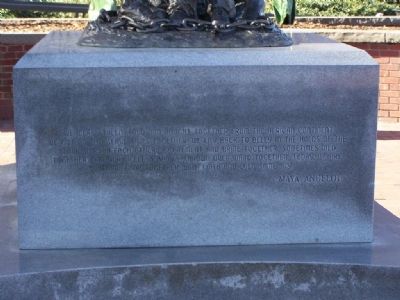

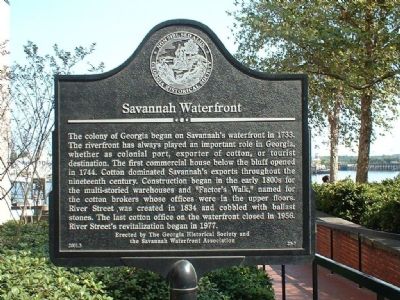
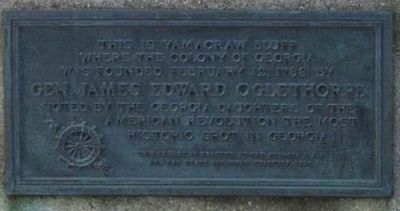
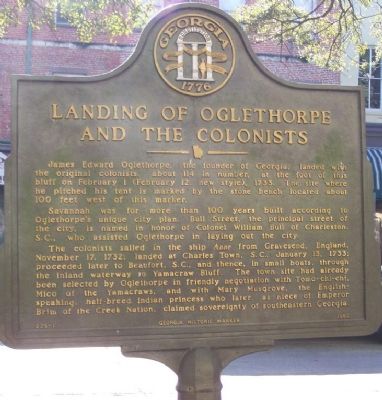
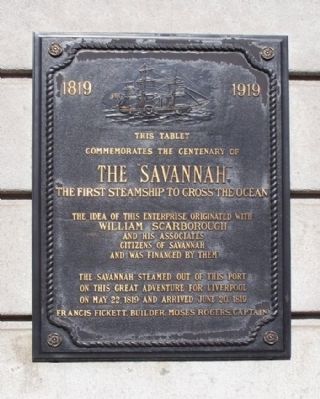
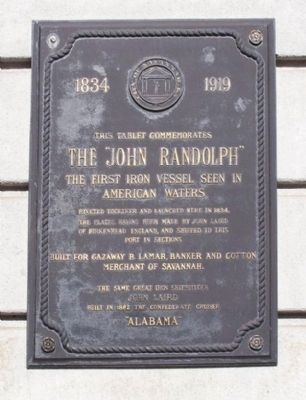
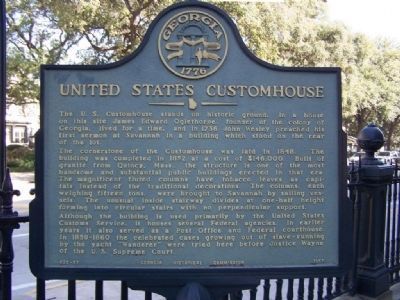
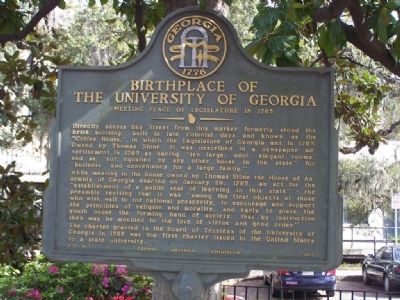
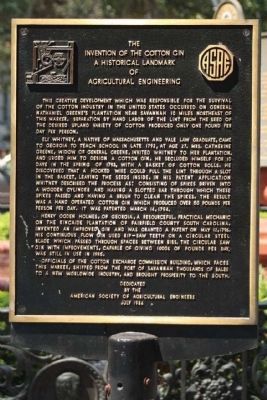
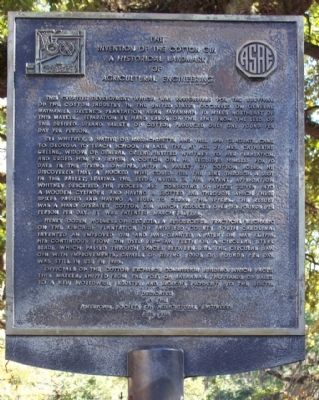
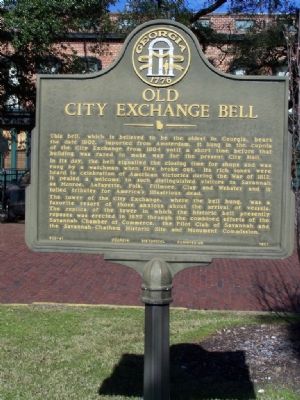
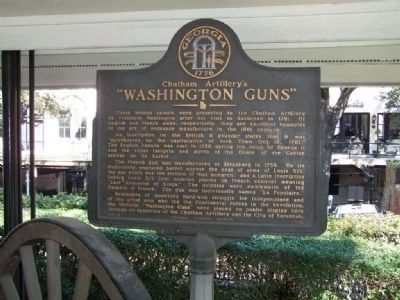
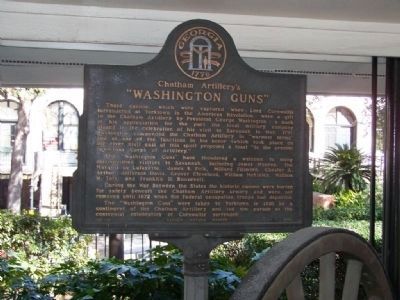
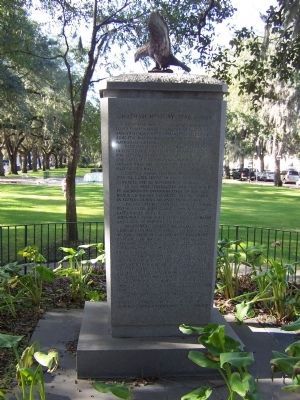
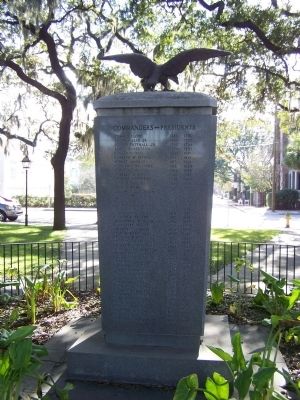
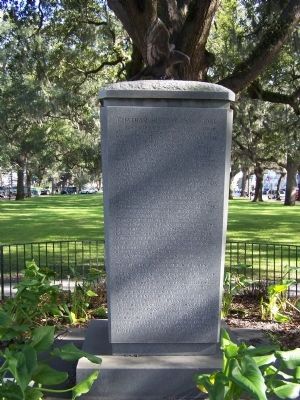
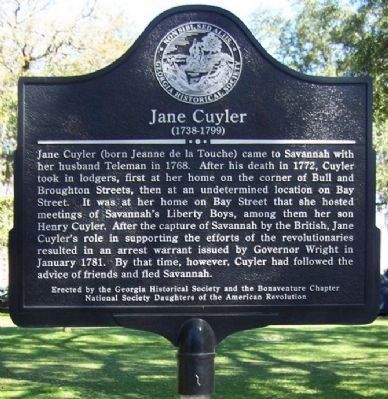
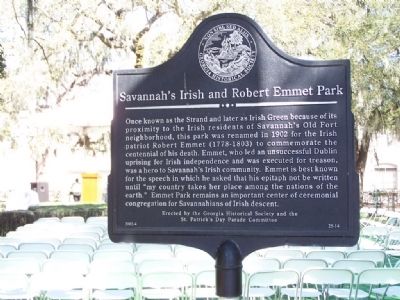
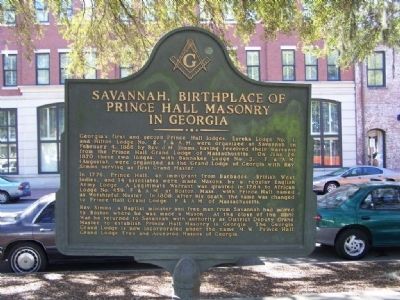
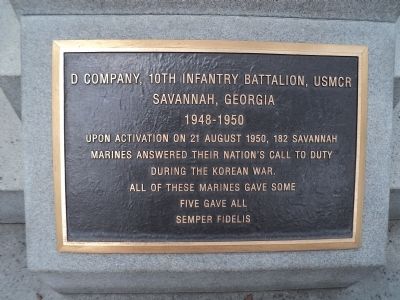
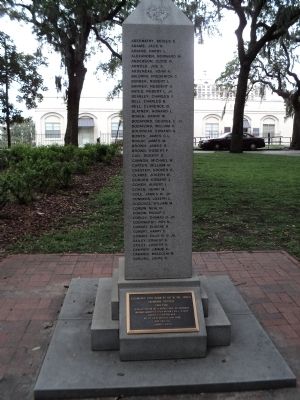
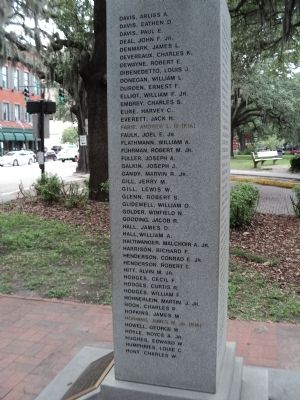
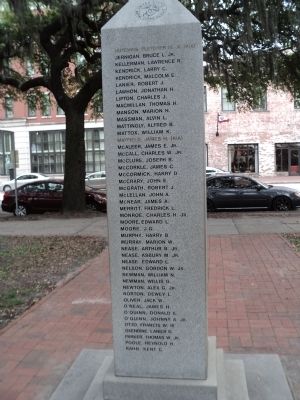
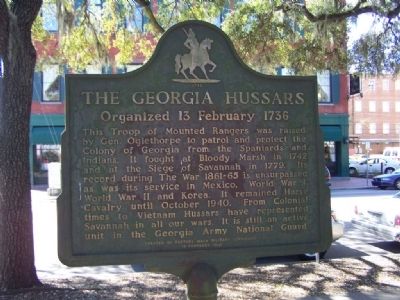
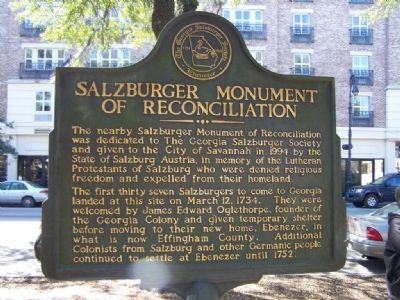
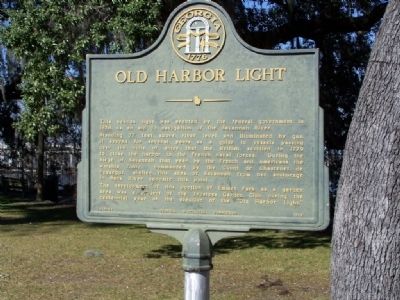
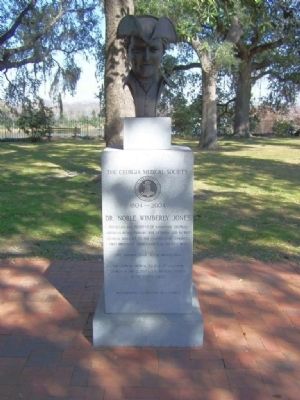
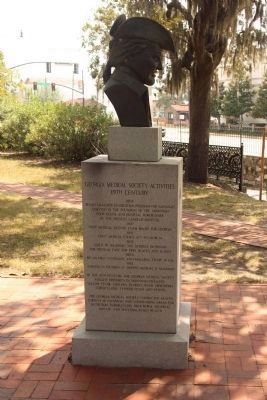
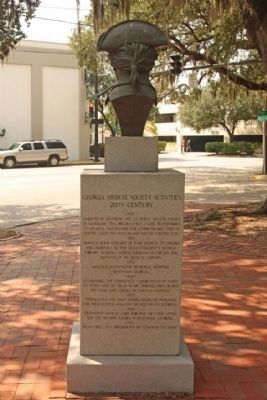
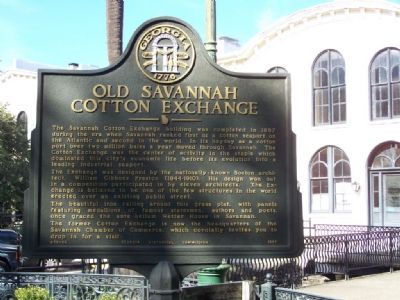
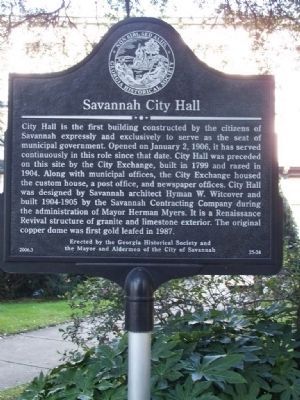

No comments:
Post a Comment